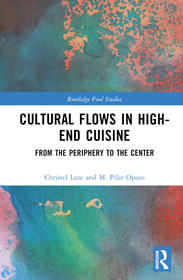
- Publisher's listprice GBP 145.00
-
69 273 Ft (65 975 Ft + 5% VAT)
The price is estimated because at the time of ordering we do not know what conversion rates will apply to HUF / product currency when the book arrives. In case HUF is weaker, the price increases slightly, in case HUF is stronger, the price goes lower slightly.
- Discount 20% (cc. 13 855 Ft off)
- Discounted price 55 419 Ft (52 780 Ft + 5% VAT)
Subcribe now and take benefit of a favourable price.
Subscribe
69 273 Ft

Availability
Estimated delivery time: In stock at the publisher, but not at Prospero's office. Delivery time approx. 3-5 weeks.
Not in stock at Prospero.
Why don't you give exact delivery time?
Delivery time is estimated on our previous experiences. We give estimations only, because we order from outside Hungary, and the delivery time mainly depends on how quickly the publisher supplies the book. Faster or slower deliveries both happen, but we do our best to supply as quickly as possible.
Product details:
- Edition number 1
- Publisher Routledge
- Date of Publication 18 July 2024
- ISBN 9781032702636
- Binding Hardback
- No. of pages238 pages
- Size 234x156 mm
- Weight 453 g
- Language English
- Illustrations 10 Illustrations, black & white; 2 Halftones, black & white; 8 Line drawings, black & white; 5 Tables, black & white 579
Categories
Short description:
Focusing on high-end cuisine, this book examines the flows of culinary knowledge from culturally peripheral locations to two cities at the global center, London and New York.
MoreLong description:
Focusing on high-end cuisine, this book examines the flows of culinary knowledge from culturally peripheral locations to two cities at the global center, London and New York.
Through the voices of chefs and other professionals in the industry, this book invites readers to rethink our understandings of high-end and ethnic cuisines, as well as the conventions and principles that shape the contemporary field of gastronomy and fine-dining. It examines a broad range of cuisines, including Peruvian, Korean, Mexican, Malaysian, Senegalese, West African, Thai, Chinese, and Indian, and conveys the chefs’ voices as they strive to elevate their cuisines through discursive and material means, including the shaping of menus, and restaurant decor. While the main focus falls on chefs as the producers of high-end cuisines, this book also gives consideration to their consumers, that is cosmopolitan diners in the two global cities, and to the influence of culinary intermediaries judging and legitimizing their high-end status. Theoretically, this book contributes to the debate on cultural globalization. It undertakes a study of hitherto rarely examined cultural counterflows or reverse cultural globalization and analyzes both the precipitants of this occurrence and the effects of cultural counterflows on both Western global cities and the home countries of chefs.
This book will be of great interest to students and scholars of food studies, food cultures, cultural globalization, and culinary studies.
'Growing numbers of chefs from the culinary periphery are now “talking back” to the supposed center of the restaurant world, questioning the primacy of traditional status hierarchies. Using fine dining in global cities like NYC and London as its focus, this book offers an important contribution to the ongoing -- and often heated -- debates on globalization, coloniality, and appropriation in the field of gastronomy as a material practice. Through interviews and the analysis of a variety of sources, the authors highlight the individual agency of chefs and other actors that so far have frequently been depicted as the mere victims of cultural domination.' - Fabio Parasecoli, New York University
'This theoretically-engaged and innovative study of reverse cultural globalization in the up-market restaurant trade of London and New York explains persuasively how the reputations of ever more diverse foreign cuisines get promoted.' - Alan Warde, University of Manchester
MoreTable of Contents:
Introduction 1. Theoretical Approaches 2. Non-Core Cuisines in Global Cities 3. The Role of Culinary Rankings and Ratings in Making ‘Peripheral’ Cuisines Global 4. Gastrodiplomacy: State-Led practices in Promoting Culinary Global Counterflows 5. Agents of Reverse Cultural Globalization: Social Profiles of the High-End ‘Non-Core’ Chefs and Their Restaurants 6. Gaining Recognition as High-End Chefs 7. Collaboration and Competition in High-end Cuisine 8. The Impact of the New High-End Cuisines on the Culinary Fields of Chefs’ Host Cities and Home Countries 9. Beyond High-End Cuisine: Commonalities with and Differences from Other Cultural Fields 10. Methods Postscript.
More



